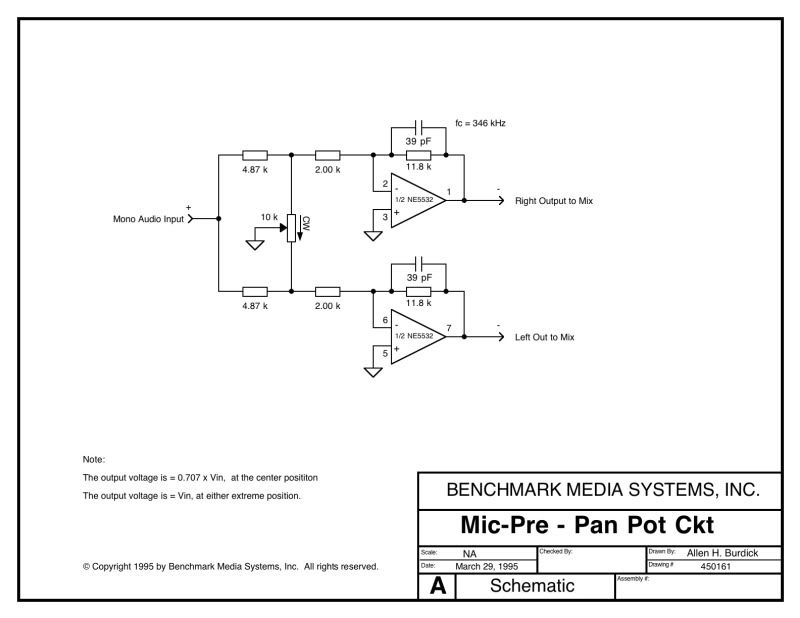From Doug Self's site:
To give smooth stereo panning without unwanted level changes, the panpot should theoretically have a sine/cosine characteristic; such components exist, but they are prohibitively expensive and so most mixing consoles use a dual linear pot. with its law bent by a pull-up resistor, as shown in Fig 7a. This not only gives a mediocre approximation to the required law, but also limits the panning range, since the pull-up signal passes through the wiper contact resistance (usually greater than the end-of-track resistance) and limits the attenuation the panpot can provide when set hard left or right.
This limitation is removed in the Soundcraft active panpot shown in Fig 7b by replacing the pull-up with a negative-impedance-converter that modulates the law-bending effect in accordance with the panpot setting, making a close approach to the sine law possible. There is no pull-up at the lower end of the wiper travel, when it is not required, so the left-right isolation using a good-quality pot. is improved from approx -65dB to -90dB. This concept has also been made the subject of patent protection.
See the actual circuit (in attachment) - if it is as good as he says, why isn't it commonly known or used?
To give smooth stereo panning without unwanted level changes, the panpot should theoretically have a sine/cosine characteristic; such components exist, but they are prohibitively expensive and so most mixing consoles use a dual linear pot. with its law bent by a pull-up resistor, as shown in Fig 7a. This not only gives a mediocre approximation to the required law, but also limits the panning range, since the pull-up signal passes through the wiper contact resistance (usually greater than the end-of-track resistance) and limits the attenuation the panpot can provide when set hard left or right.
This limitation is removed in the Soundcraft active panpot shown in Fig 7b by replacing the pull-up with a negative-impedance-converter that modulates the law-bending effect in accordance with the panpot setting, making a close approach to the sine law possible. There is no pull-up at the lower end of the wiper travel, when it is not required, so the left-right isolation using a good-quality pot. is improved from approx -65dB to -90dB. This concept has also been made the subject of patent protection.
See the actual circuit (in attachment) - if it is as good as he says, why isn't it commonly known or used?






